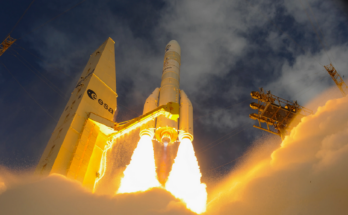by Richard Pettibone, Aerospace & Defense Companies and Bill Ostrove, Space Systems
After a difficult few years, Aerojet Rocketdyne is getting back on track. With its backlog steadily improving, the company has addressed its sales and past difficulties.
In order to keep its momentum, the company has initiated the next phase of what it calls its Competitive Improvement Program (CIP). This latest effort is a follow-up to an earlier CIP, which began in 2015. As with the company’s earlier effort, the current consolidation aims to optimize operations around its key markets of Defense and Space, producing $230 million in annual savings.
Key to this effort will be a footprint reduction as sites Sacramento and Vernon, California, and Gainesville, Virginia, will be consolidated. Meanwhile, operations in Huntsville, Alabama, will be expanded with a new facility focused in part on AR1 engine production, which is competing against Blue Origin’s BE-4 rocket engine to power United Launch Alliance’s (ULA’s) new Vulcan launch vehicle.

Consolidating operations to Huntsville will help Aerojet in other ways as well. Final assembly of ULA’s Atlas V and Delta IV occurs in nearby Decatur. Aerojet already has a strong presence in the region. Expanding operations so close to ULA could provide a major advantage when the company tries to do business with the Lockheed Martin-Boeing joint venture. NASA’s Marshall Space Flight Center is also nearby. That could give Aerojet an advantage when it bids for government work. It also could mean that there is a steady supply of experienced workers for Aerojet to tap into.
This latest effort is no doubt a countermove following Aerojet’s failed 2015 bid to acquire ULA, which is owned by Boeing and Lockheed Martin. The $2 billion offer was rejected in short order by the partners. For a while now, Aerojet has been trying to gain access to ULA data, which would enable the company to put its developmental AR1 engine on the Atlas V as a new option under the Evolved Expendable Launch Vehicle program. The move would have also shut out rival Blue Origin, which is developing an engine reportedly favored by ULA (though ULA has stated that the AR1 is still in contention).
This push to gain additional applications has been prompted by the conflict in Ukraine and the subsequent economic sanctions enacted against Russia. As a result, Aerojet Rocketdyne is pushing its AR1 as the only direct replacement for the embargoed Russian-built RD-180 engine, which is used on the Atlas V, and the RD-181 engine, which is used on Antares launch vehicles. The company received a boost of confidence in the program in early 2016, when it was awarded a contract worth up to $534 million over five years by the U.S. Air Force to certify and start delivering flight-ready AR1 engines in 2019.
While the AR1 is currently one of Aerojet Rocketdyne’s most public programs, the firm’s foundation is built on its position as a key supplier of military rocket and missile propulsion systems. Global instability is increasingly becoming the new normal and, as such, launch and missile systems should remain a funding priority. In addition, NASA’s current program priorities, such as the Space Launch System and Orion, should also benefit the firm.
Thanks to this long view of the market, Aerojet Rocketdyne should be well positioned to capitalize on opportunities in space and missile propulsion as they arise in the years ahead.
Please feel free to use this content with Forecast International and analyst attributions, along with a link to the article. Contact Ray Peterson at +1 (203) 426-0800 or via email at ray.peterson@forecast1.com for additional analysis.
A military history enthusiast, Richard began at Forecast International as editor of the World Weapons Weekly newsletter. As the Internet grew in importance as a research tool, he helped design the company's Forecast Intelligence Center and currently coordinates the EMarket Alert newsletters for clients. Richard also manages social media efforts, including two new blogs: Defense & Security Monitor, covering defense systems and international issues, and Flight Plan, which focuses on commercial aviation and space systems. For over 30 years, Richard has authored the Defense & Aerospace Companies, Volume I (North America) and Volume II (International) services. The two books provide detailed data on major aerospace and defense contractors. He also edits the International Contractors service, a database that tracks all the contractors involved in the programs covered in the FI library. More recently he was appointed Manager, Information Services Group (ISG), a new unit that encompasses developing outbound content for both Forecast International and Military Periscope.




